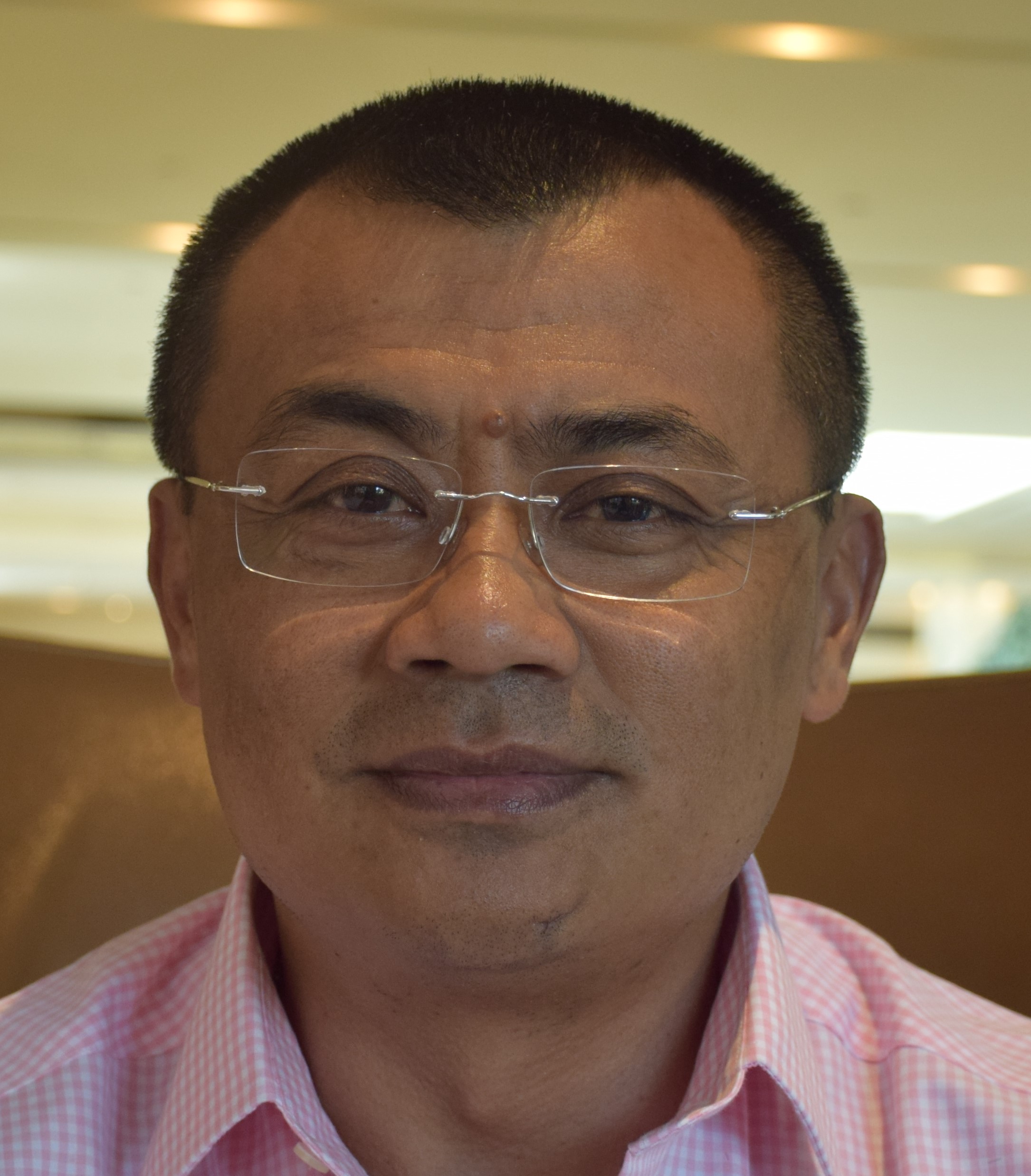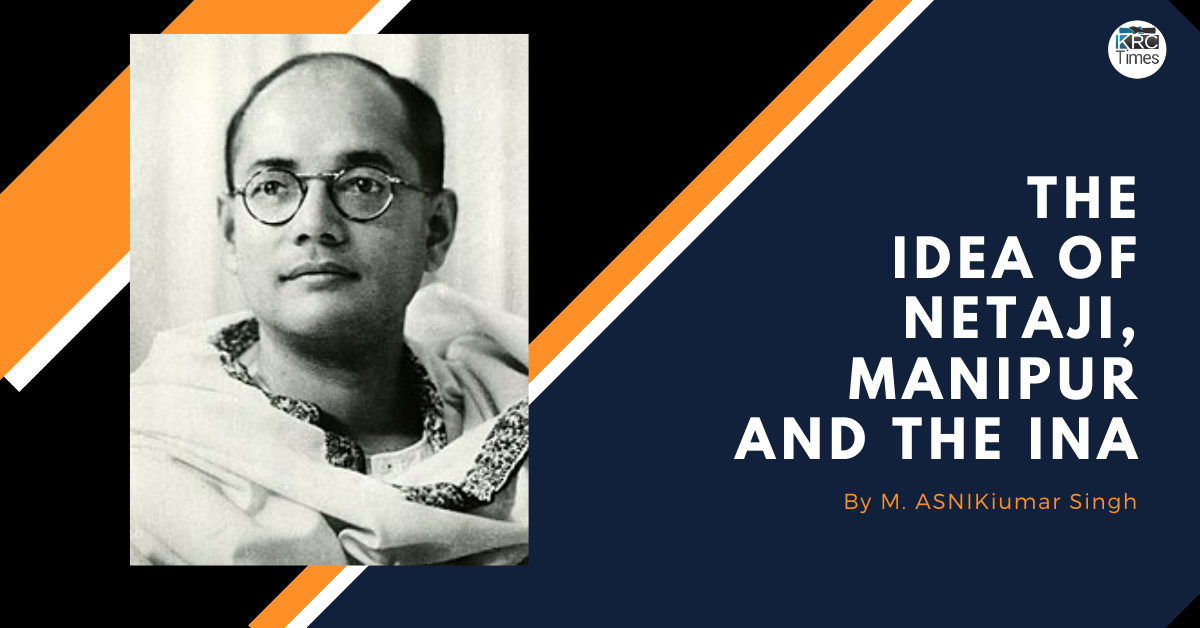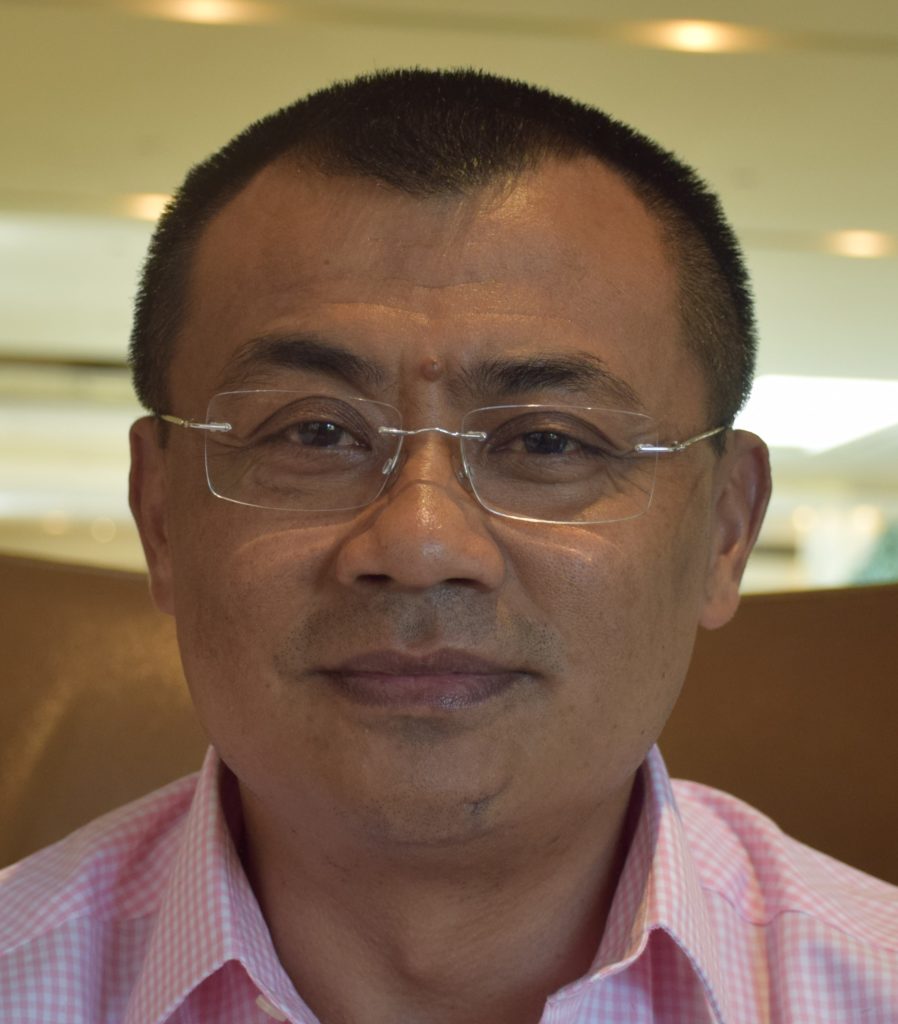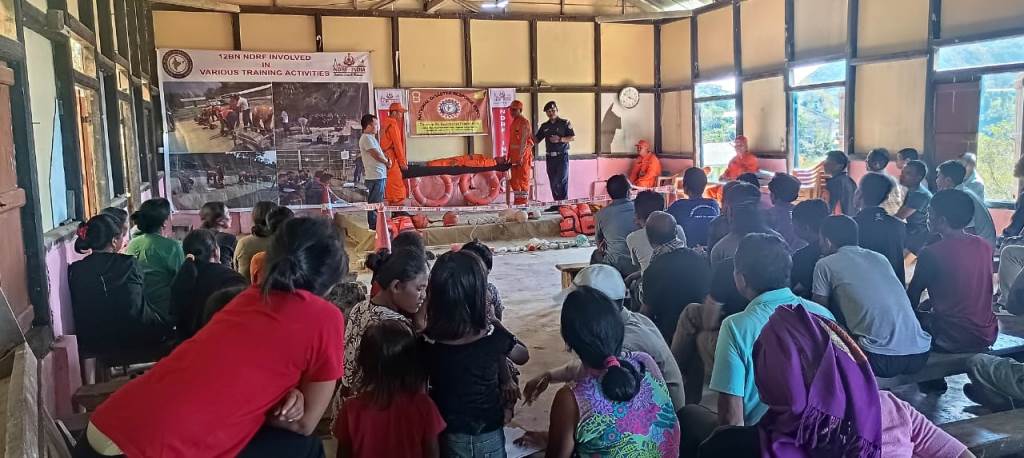I grew up idolising the great man, deeply engrossed in the tales surrounding his aura of greatness and of course his vision for a strong, independent India
 M. Asnikumar Singh
M. Asnikumar Singh

I was born and grew up 3 miles from the place where the Indian Flag was hoisted by Colonel Shaukat Malik of the INA on 14 April, 1944.
My late grandfather being contemporaries of our state’s own figures like Koireng Singh(friends with Koireng) and Hemam Nilamani Singh also did no harm to my love, admiration and quest for tales of the INA and its exploits. The Indian National Army, although formed in 1942 under Mohan Singh’s leadership in Singapore with Indian POWs was revived under Netaji’s leadership in 1943.
I grew up idolising the great man, deeply engrossed in the tales surrounding his aura of greatness and of course his vision for a strong, independent India. My admiration went to the extent that I used to argue with my fellow peers in school about how Netaji was perhaps the greatest military commander independent India could have had but like his “disappearance”, this too shall remain a mystery forever. When the MTF (Manipur Thinkers Forum); a platform where young, innovative minds can come together to shape opinions for a better Manipur, a lifelong dream of mine, was ready to be launched, the only place I had in mind to start its journey was the INA hall in Moirang. On the 18th of August, 2019 the MTF commenced its journey from the INA hall in Moirang. This was a simple but heartfelt tribute to Netaji and his ideas.
The tales of INA in Manipur
Following is a short excerpt from the narration of the historic events that took place in Moirang during the Second World War.
The Indo Japanese forces advanced very fast with heavy guns and tanks. The 17th British Division could not resist the advancing forces as such they were compelled to retreat leaving completely behind all the southern hill ranges (now Churchandpur and Pherzawl District) and the villages upto Potshangbam under the hands of the advancing Japanese and INA column. The people of Moirang and surrounding villages were jubilant at the sight of Indo Japanese forces. Thus, the withdrawal of the British 17th Division was completed on April 13, 1944.
On the 14th April which happen to be Manipuri New Year Day i.e. Cheiraoba, some leaders of Moirang led by M. Koireng Singh, L. Sanaba Singh, K. Kanglen, Meinam Mani Singh and others went to Tronglaobi village, some 3 miles to the south of Moirang which happened to be British strong defense base before their retreat but now occupied by the Indo Japanese forces. The leaders had a discussion with the Indo Japanese forces. After taking stock of the situation, at about 5 pm on the day Col. Soukat Ali Malik, Commander of the Bahadur (Intelligence) Group planted the Tricolour Flag with sprigging Tiger as an emblem of the historic Moirang Kangla where the INA Martyrs Memorial complex is, at present, taking shape. Many Japanese officers and soldiers were also assembled. All the arms and ammunition abandoned by British forces collected by local people were handed over to Col. Saukat Ali Malik. Captain Ito of 33rd Mountain Regiment and Col. Malik addressed the gathering. Col. Malik’s version was translated by M. Koireng Singh and the gist of the version was “the Provisional Government of the Azad Hind had declared war on England and America with a commitment to complete with the creation of Greater East Asia and bring welfare of the people of India by defeating Anglo American forces. The Indian National Army with unscented support of the Japanese Govt. has now crossed the Indo Burmese border and in the course of the struggle for the liberation of the people of India from the British Yoke, we have now reached Moirang, the ancient citadel of Manipur. Our commitment is the march to Delhi and unfurls the Tricolour Flag then at Lalkilla. Many had died on our way to reach near (Moirang) and many would die on our way to Delhi. However, the expulsion of the enemy from the sacred soil of India is a compulsion for us. We shall fidget and the people of Manipur would provide supplies to us. Nothing about us shall be passed on to the enemy, everything about the enemy should be passed on to us. Freedom of India is very near and near at hand. We shall win it and we shall have progressed and prosperity of the people of India after it. So, give us your hand, our collective efforts should cause India free from slavery.”
The assembled crowd welcomed the message and they felt elated that they were the first liberated people of India although many of their family members were evacuated from Moirang and took shelter on the eastern hillocks situated at Loktak Lake. Local people gladly donated rice, dry fish and vegetable to the Indo Japanese forces. The 13 members of Nikhil Manipuri Mahasabha namely Th. Angou Singh, P. Tomal Singh, S. Ibohal Singh, I. Tombi Singh, L. Bijoy Singh, L. Kanhai Singh, M. Jatra Singh, W. Gyaneshwor Singh, M. Amuba Singh, L. Irabot Singh, Kh. Jugeshwor Singh, Keinya Devi and M. Randhoni Devi reached Moirang secretly from Imphal and other places. They joined with the members of Moirang and worked together in carrying out espionage activities. All the surrounding villages up to Ningthoukhong was liberated from the British forces. The southern part of Manipur from Churchandpur and Pherzawl District to Ningthoukhong covering an area of 15000 sq. km was under the control of the INA with its Headquarters at Moirang for 3 months till July 15, 1944. The building of the Head Quarter belonged to H. Nilamani Singh INA freedom fighter and now stands at Konjengbam Leikai. The surrounding areas of the Head Quarter were declared enemy zone by the British. Manipuri freedom fighters like K. Gopal Singh, L. Sanaba Singh, M. Koireng Singh and H. Nilamani Singh of Moirang were declared as traitors by the British Political Agents and “Shoot at Sight” order was passed on them. All the 17 members of the Mahasabha (13 from Imphal and 4 from Moirang) were blacklisted. Scorched earth policy was extended from Torbung to Ningthoukhong. The area was heavily bombarded and many civilians were killed and injured. In Moirang alone, more than one thousand homes were set ablaze with an exception of five or six.
Figures like Hemam Nilamani Singh and M. Koireng Singh feature in the state’s folklore even today. Both of them went to play crucial roles in shaping Manipur’s graph after independence, with their monumental social contributions in the state’s development. The idea that INA meant contributing to the society lives on in the great work they did in their times as colossal political figures in the state post-independence.
What excites me even today is the emotional anecdotes I heard from my late grandparents about how the members of Nikhil Manipuri Mahasabha; M. Koireng Singh( in Thanga Moirangthem), H. Nilamani Singh( Sendra Hill) and their loyal lieutenants lived in hiding for a few weeks in our clan’s numerous households in Thanga before they made their escape to Burma. During that period, our clan’s elders formed a close bond with these brave men, due to shared ideals, respect and admiration for the INA’s struggle in the face of the might of the British authorities. In 1945, they were arrested and endured a 7 month long rigorous imprisonment in Rangoon central jail. After their release, they reached Imphal on the 8th of May,1946. My grandfather would narrate me deeply intriguing tales about their valour, tales which have been passed on through generations in our clan and the tradition continues even today.
Women on the forefront
The INA was a great liberating and inspirational force for the section of Indian youths who had become disillusioned with over-reliance on ideals and lesser focus on actual action. This section was growing rapidly in the early 1940s. The idea of women being given space within the Indian armed forces can also be traced back to the INA’s Rani Of Jhansi regiment, which even today remains a source of inspiration for young girls aspiring to join the armed forces someday.
Netaji- the man, the myth, the legend
The aura of Netaji transcended borders in his heydays. During the early days of WWII, the Japanese Intelligence services noted from speaking to captured Indian soldiers that Bose was held in extremely high regard as a nationalist and was considered by Indian soldiers as the only person who could lead an army fighting for India’s independence. Bose’s objection to Gandhi’s pacifism is well documented. This objection perhaps stemmed from the fact that Netaji, as long as there was blood flowing in his veins could not tolerate Indians being perceived as being weak by anyone.
Ignominy to the idea of Netaji
The Congress with its all-inclusive agenda; on paper was the perfect umbrella organisation to lead the freedom struggle but its flaws were many. The constant disagreements between radicals, moderates, various other interest groups within the INC in the lead up to independence is well known. The Muslim League and the Congress’s love-hate relationship ultimately concluded with partition. Gandhi and Ambedkar’s constant and intense disagreements over various issues regarding minorities is another example. In this context, the British authorities saw Indians as a disunited bunch who were indecisive at crucial moments. The irony is that this indecisiveness glows brightly in the INC even today.
The Congress party stayed in power for almost 6 decades since independence. What is a disgrace to Netaji’s indomitable legacy is the fact that it has been tampered with; to hide the flaws/blunders of the INC and its leaders in both pre and post-independence years. Incidents like the debacle of 1962 could have been averted if realistic rather than idealistic policies were guiding Nehru and his commanders.
Talking about commanders, highly respected young INA commanders like Gurbaksh Singh Dhillon and his colleagues were convicted in the infamous Red Fort Trials but were later released on orders of the then Commander In Chief, Claude Auchinlek after considering the rousing public support for their release. Dhillon was given his due recognition after more than 4 decades in 1998, with the Padma Bhushan when the BJP was in power under Bajpayee Ji’s leadership.
Love and oblation for the nation
The INA was not just an army of rebels but it was much more than we were led to believe. It was an idea, a movement; that, the love for the nation came above everything else. For the brave hearts of the INA, spilling their own blood for India was a small sacrifice, about which they didn’t have the slightest of second thoughts.
The fact that the Congress downplayed the heroics of the INA and its Bravehearts for 6 decades is a travesty and an insult to Netaji’s vision of a strong, resolute India. These are ideas today’s youth ought to live by.
A long overdue course of action: reviving the ideas of INA in Manipur.
The state of Manipur despite the trials and tribulations it faced in the 20th century, unequivocally made contributions in Indian nationalism, with its association with INA. The unfortunate part is that due to some reason or another, the heroism and contributions of Manipur in the freedom struggle have not been highlighted.
The need of the hour is the establishment of a dedicated autonomous agency under the purview of the Ministry of Tourism and Culture for redevelopment and management of INA associated landmarks in Manipur. The composition of such an agency could be of concerned stakeholders as well as central and state government functionaries. The acquisition of the original INA Headquarter in Moirang Konjengbam Leikai by the government and subsequent complete redevelopment of the complex to a world-class state is something whose time has come.
And perhaps, the most requisite action in the current circumstances is a complete rebuild and expansion of the INA complex in Moirang with modern state of the art technology and set up.
The aforementioned suggestions are something which will ensure a long-overdue revival of the ideas of INA and worldwide recognition of Manipur’s contribution in Indian Nationalism.
And more importantly, the revival of such ideas will be a source of inspiration and guidance to the youths of a state which is blessed with talents in abundance but never fulfilled its potential.
Reinvigorating the ideas of Netaji
In this day and age, where some sections have the audacity to think and feel it is acceptable to criticise the commemoration of the true heroes of our motherland like Patel, Bose, it becomes necessary that the heroic tales of INA and Netaji ought to be a part of the school curriculum for children of all age groups. It is paramount that the young students of this nation recognise and understand the values and ideals of men who sacrificed their lives so that their children could live in a proud, resolute and self-reliant India.
For the youths of today, it is crucial that they recognise the distinction between true heroes and pretenders.
As someone who truly admires Netaji and what he stood for, it is also genuinely hurtful and appalling to see Bengal, the place where he spent his youth and made his mark, being turned into a place where democracy in every form is being ridiculed by a Chief Minister who is so out of touch with reality.
It is circumstances like these that reinforces the argument of the need to instil Netaji’s patriotic values and ideas amongst the hearts and minds of young Indians who will mould the destiny of this nation in the 21st century.
It is never too late or too ‘out of touch’ to look up to our heroes of the past for inspiration, especially when those heroes are men like Netaji.

(Writer is a former State General Secretary, Vice President and presently Spokesperson of BJP Manipur Pradesh, Founder Secretary Manipur Thinkers Forum and also Chairman of Manipur Development Society)





Netaji was a great , charismatic man, without his effort the independent of India is worthless. Not only shanti, Ahimsa ,we sometimes need to the strike the bull, show the strength ,roar loud to frighten. Starting of women’s resigment for the 1st time”Rani ki Hansi”, .The INA trial, the Rebellion by Navy Rating were woth frighting the British that time…The article was an incredible. I love the way, the style of writings. I do admire the writer too.